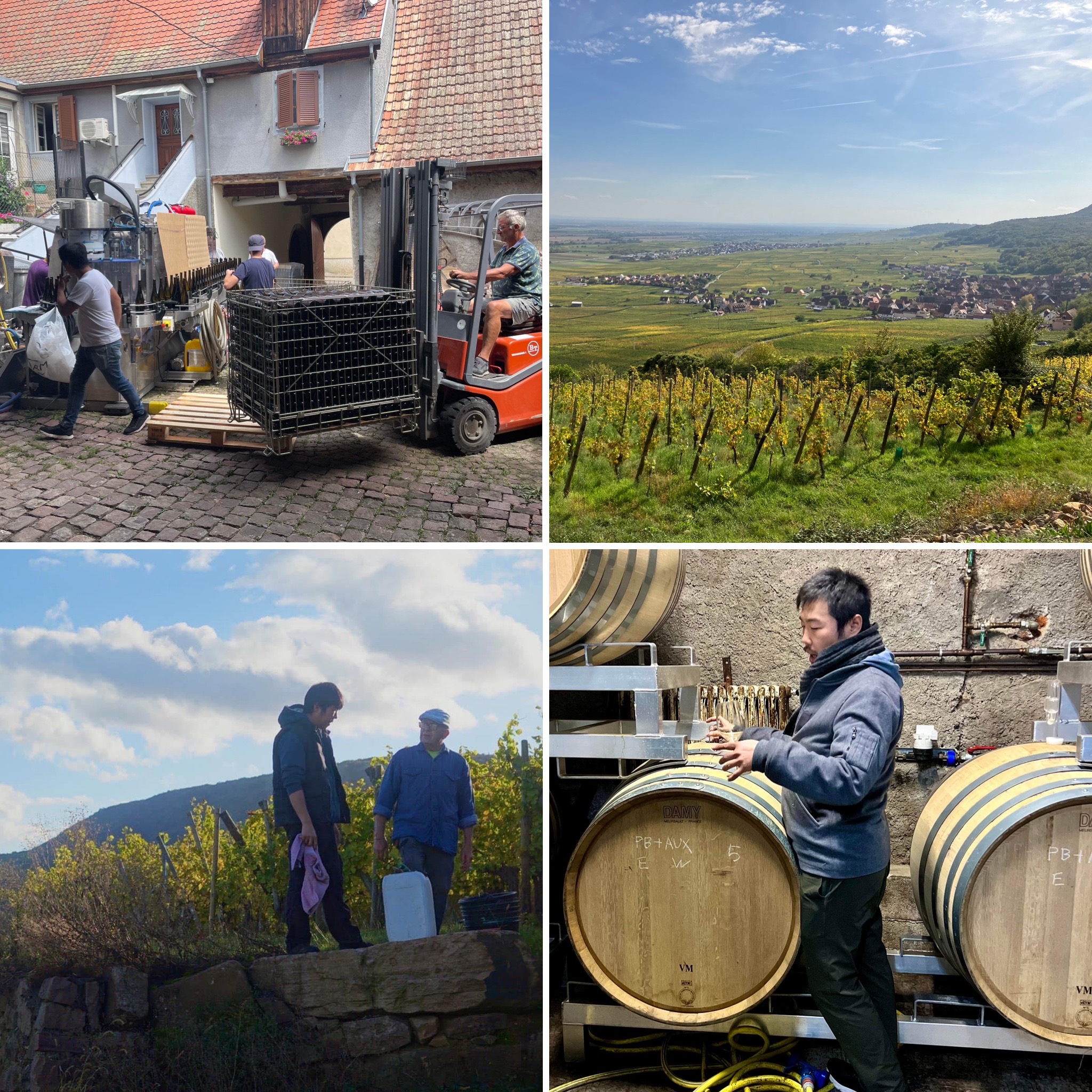Domaine Yura: A Japanese Vintner’s Alsace Adventure.
Located in northeastern France, nestled between the Vosges Mountains and the Rhine River, the traditional wine region, Alsace, traces its winemaking roots back to the era of the Roman Empire. Throughout its history, Alsace has been deeply influenced by both Germany and France due to territorial change. In this esteemed region, a Japanese winemaker has recently embarked on his own venture.
Jintaro Yura, 38, originating from Tokyo, has more than ten years of experience in Alsace. The first vintage he released, a 2020 Pinot Blanc, garnered attention from merchants and restaurants for its exceptional purity and balance. In Jintaro’s fourth year, our own Kazumi had a fortunate opportunity to visit Domaine Yura in Alsace.
This article delves into the winemaking philosophy and style of a visionary vintner, blending a review of his exceptional wines with the captivating tale of a foreign winemaker’s journey in a time-honored region. It explores the inspiring fusion of innovation with tradition.
Meet Jintaro Yura: Embracing Diversity in the Heart of Alsace
Jintaro emerges as a figure whose life and career are as rich and nuanced as the wines he creates. Born into the vibrant backdrop of Tokyo, where the French culinary arts were part of his daily life, Jintaro’s journey into winemaking is a tale of passion, exploration, and dedication. His early exposure to French wine culture, thanks to his father’s role at a top French restaurant in Tokyo, laid the foundation for his deep-seated love for viniculture. Pursuing microbiology and oenology in Japan, Jintaro’s academic background equipped him with a keen understanding of the scientific aspects of winemaking, while his heart remained tethered to the artistry of the craft.
His winemaking voyage took him from the verdant landscapes of KOYAMA WINES in Waipara, New Zealand, where he was mentored by Takahiro Koyama, to the historic vineyards of Alsace, France. Here, under the tutelage of renowned producers like Josmeyer and Almand Hurst, and with experience as a sommelier bridging these chapters, Jintaro honed his skills and philosophy. His profound appreciation for cool-climate wines and dedication to his craft culminated in the creation of Domaine Yura in 2020, marking the beginning of his own legacy.
With a deep-rooted passion for winemaking and a commitment to experimentation and observation, Jintaro’s approach is both scientific and intuitive. Fluent in French and blessed with a friendly disposition, he shares captivating tales of integration and camaraderie in the traditional winemaking community of Alsace. Currently, Jintaro is at a pivotal moment, preparing to transition from a shared space to his own winery—a step that symbolizes not just growth but the bright future of Domaine Yura.
Jintaro’s story is a testament to the power of crossing cultural boundaries and the pursuit of excellence in winemaking. It’s a narrative that reflects the evolving nature of the wine industry, where tradition meets innovation, and where every bottle tells a story of journey, discovery, and passion.
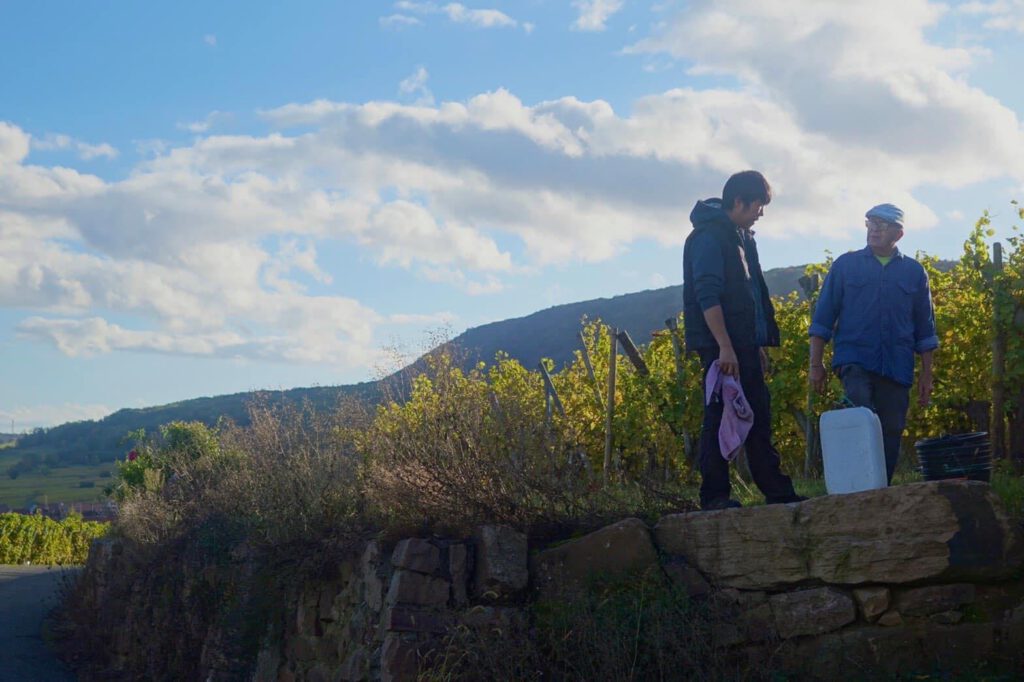
Philosophy and Style of Domaine Yura
Yura’s portfolio started off with a Pinot Blanc in 2020, and it has grown to include Riesling and Pinot Noir in 2022. Jintaro’s fondness for Pinot Blanc stems from its inviting nature and gentle characteristics that make it a pleasure to drink without jading the palate.
Jintaro’s winemaking approach is both objective-driven and scientific. Regarding Pinot Blanc, Jintaro strives for purity, precision, or a focused impression, envisioning a limited yet distinct range of aromas. While Pinot Blanc is often utilized for Cremant d’Alsace, Jintaro has elevated this grape variety by employing production methods akin to those used to craft fine still wines from Burgundy, such as DAMY barrels from Meursault.
When it comes to Riesling, he places great emphasis on the texture of acidity in its aftertaste. He believes that Riesling is the grape variety that best reflects the terroir, and he particularly enjoys the acidity spreading across the palate, a characteristic often found in Rieslings grown in clay and limestone soils. Aiming for his ideal texture, the wine is carefully crafted through a blend from three different vessels: mainly stainless steel, a small portion from a cement tank, and a new oak barrel. The result is a symphony of aromas and textures. Jintaro eagerly anticipates how these aromas and textures develop in the glass.
For Pinot Noir, he adopts a different approach. Jintaro strives to create a rich variety of aroma compounds that offer depth and umami, influenced by the contributions of different microbes that enhance its complexity, along with subtle reductive characteristics. Additionally, he integrates whole bunch fermentation or small barrels, giving his wine a distinct Burgundian-style touch.
Jintaro’s concept of delicious wine is also crystal clear. It’s achieving the balance among aromas, acidity, and umami, whether in white or red wine. Jintaro believes the balance lies in a delicate equilibrium where strength is subtly subdued. He also thinks umami is more perceptible when the taste is less pronounced. Take, for example, pairings like sushi (fish and rice) or cheese and bread, where the main components may be overpowering on their own but are softened by their neutral counterparts, enhancing the intricate flavors, which is the balance Jintaro looks to achieve. So, he intentionally uses grapes with a slightly higher yield instead of concentrated fruits with a low yield, expressing pureness, precision, and balance in the winemaking process.
Additionally, his wine is anticipated to be enjoyed when it’s young. While letting it settle for about six months after release is recommended, Jintaro has fine-tuned the winemaking process to fit the target. This adjustment has resulted in the wine requiring less SO2 usage at bottling, thus preserving the purity of the fruit flavors without masking them. The vibrant acidity will contribute to the aging potential, but Jintaro expects to drink them within five years.
Jintaro’s Experimenting Nature
Amidst his winemaking philosophy, we find Jintaro’s experimenting nature. Although Jintaro deeply admires the traditional wines of Alsace, often singling out Albert Boxler or Valentin Zusslin as among his favorites, he’s quick to acknowledge the significant variations in conditions. In Alsace, traditional winemakers boast an array of exceptional vineyards in the Grand Cru region, where they meticulously cultivate concentrated, high-quality grapes. Their primary aim often lies in precisely capturing the terroir of these top-tier vineyards.
Despite not owning vineyards, Domaine Yura is actively exploring alternative approaches to craft exquisite wines. Jintaro understands the challenge of competing with esteemed traditional producers of Alsace, but views establishing his style by experimentation as another driving force propelling his journey forward. For example, using new oak barrels for Riesling is seldom seen in Alsace, providing evidence of its novelty. However, its genetically related cousin in the same family, Chenin Blanc, is frequently fermented and aged in partially new oak barrels, as observed in regions like South Africa. Here, the aromas of the semi-aromatic variety seamlessly meld with a touch of oak. This prompts Jintaro to ponder, “Why not for Riesling?” Perhaps it’s a privilege for a challenger to have the freedom to explore new approaches to winemaking without being constrained by traditional styles.
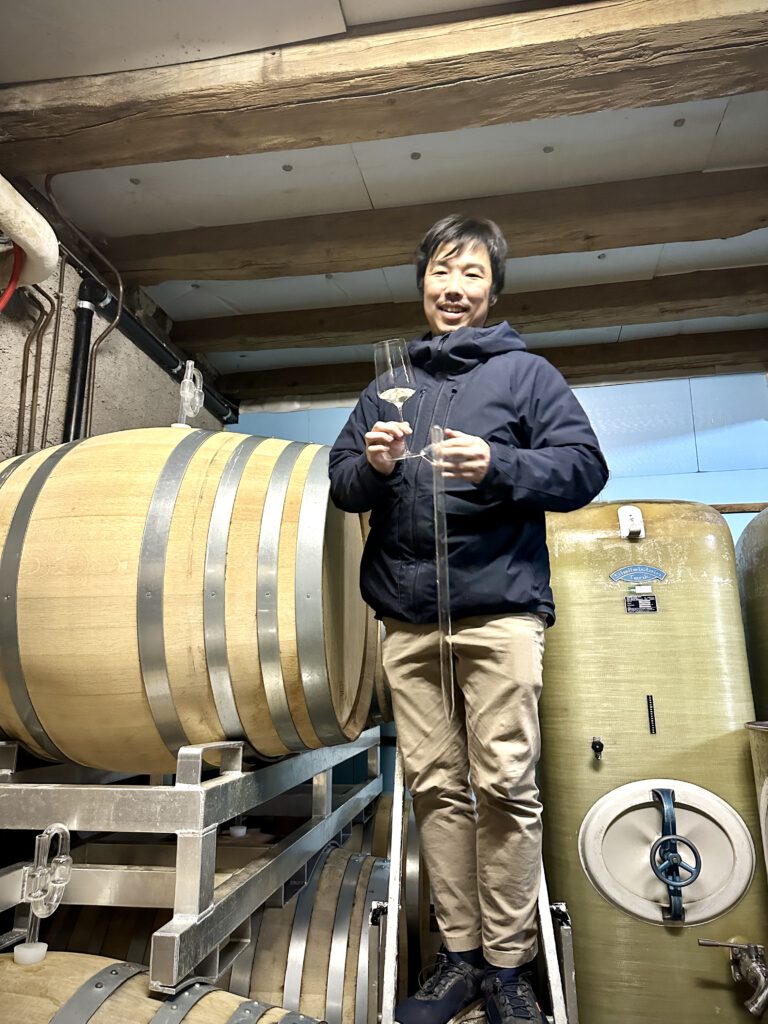
Tasting Domaine Yura: A Symphony of Innovation and Tradition
We proceeded with bottles following a round of barrel tastings of the 2023 vintage. Below our reviews and ratings for the Pinot Blanc, Riesling and Pinot Noir.
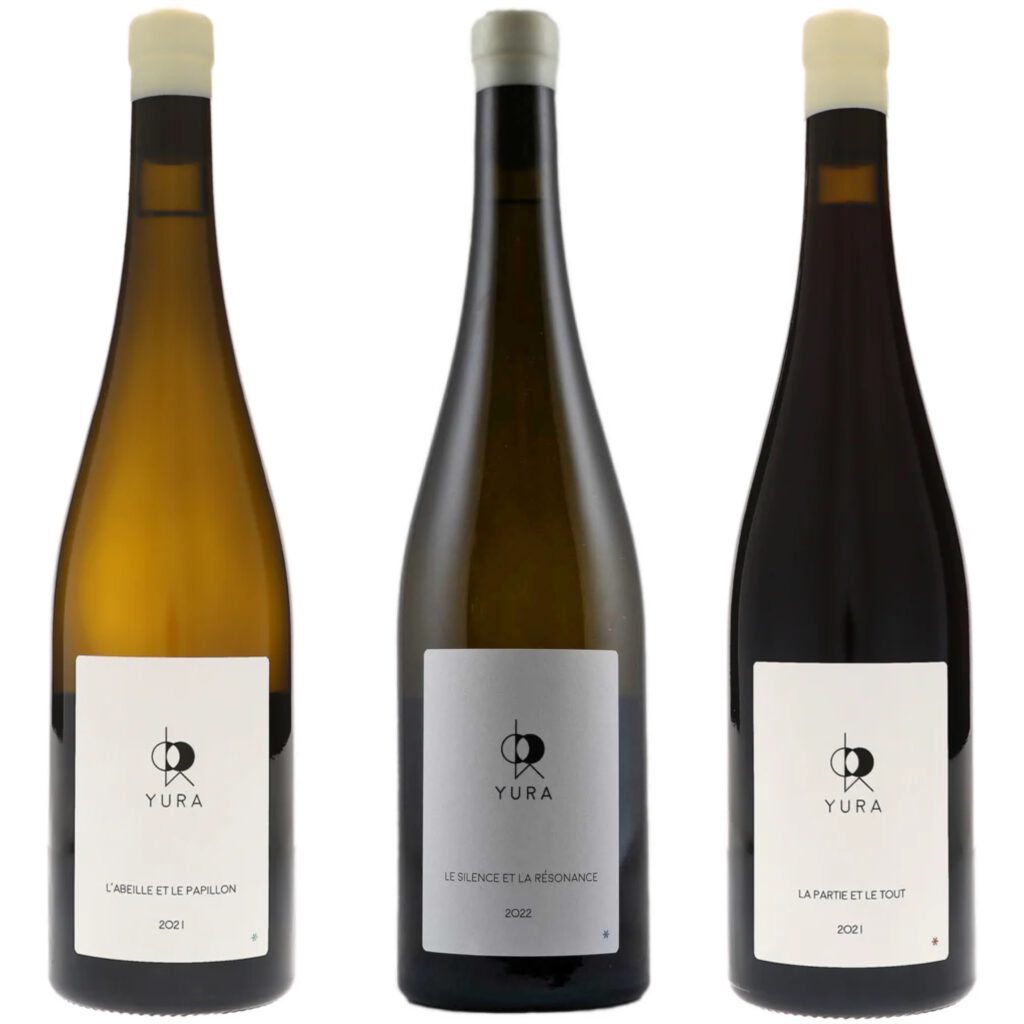
Yura L’Abeille et le Papillon 2021 | 100% Pinot Blanc
‘The Bee and the Butterfly’ in English intends springtime and delicate flavors. The straight bee symbolizes stainless steel, while the soft butterfly embodies the richness imparted by the barrel. The 2021 vintage posed challenges with its rainy conditions, resulting in higher acidity yet contributing to its reputation for elegance. Fermented with indigenous yeasts and aged for 12 months, with 70% in a demi-muid (500L 1-4 years old oak barrel) and the remaining 30% in stainless steel tanks.
Pure and precise citrus notes integrated into lean acidity and a smooth texture with umami undertones. It achieves an outstanding balance, with a pleasant bitterness on the finish reminiscent of biting into a Mandarin orange.
We award this Pinot Blanc with a 91-point DWA score – Drink 2023-2027.
Yura Le Silence et La Résonance 2022 | 100% Riesling
‘Silence and Resonance’ in English, intending to aftertaste on the finish of this newly crafted style achieved through a small amount of demi-muid barrel influence. Fermented with indigenous yeasts and aged for 12 months, with 70% in stainless steel tanks, 25% in demi-muid (500L new oak barrel), and 5% in ceramic vessels.
Upon first sip, it’s fresh and fruity, offering grapefruit, lemon, delicate white flowers, and pear aromas. A harmonious profile with a structured texture and a hint of umami on the palate enriches the experience, creating a delicate, mellow, and savory sensation. Subtle oak background that works for the overall profile.
We award this Riesling with a 92-point DWA score – Drink 2023-2028.
Yura La Partie Et Le Tout 2022 | 100% Pinot Noir
‘The Part and The Whole’ in English. Carbonic maceration (surprisingly, there’s no hint of this in the flavor profile) and alcoholic fermentation with indigenous yeast, followed by aging for 12 months entirely in demi-muid barrels (one-year-old).
Elegant Burgundian style. Pure red berries and Japanese plum (Ume), with slightly reductive and smoky notes, add depth and complexity. The balance between crunchy red fruits and savory umami flavors is exquisite. While the acidity is well-controlled, it’s relatively high, and the silky tannins round out the overall impression, resulting in a harmonious wine.
We award this Pinot Noir with a 92-point DWA score – Drink 2023-2028.
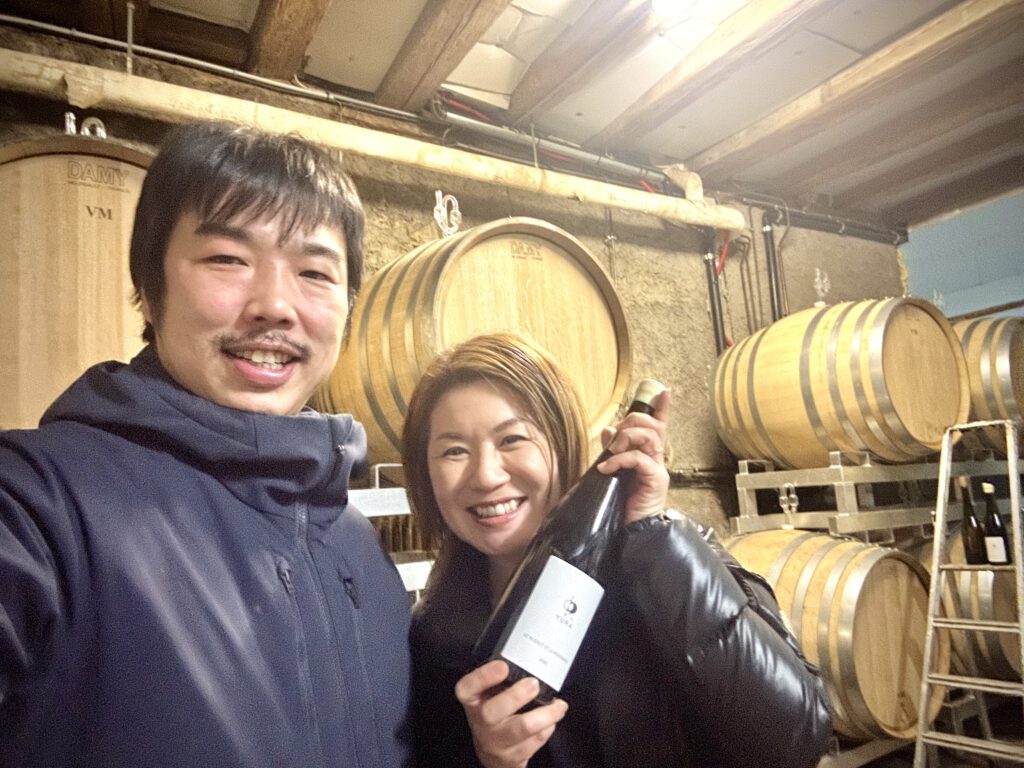
Harmony in a Glass: The Culinary Symphony of Domaine Yura’s Wines
Jintaro crafts wines with gentle balance, making them ideal companions for various culinary experiences. Especially now, as the global scene embraces a trend about food toward pure and simple that highlights ingredients’ natural flavors, often enhanced with minimalist seasonings like salt and citrus. Yura’s wines seamlessly align with this ethos of purity.
Yura’s wines are distributed thoughtfully through importers with strong connections to restaurants worldwide but are also retailed. If you encounter the wines in a restaurant that prioritizes the essence of ingredients, it’s worth giving them a taste together. Without a doubt, Yura’s wines promise to captivate our attention in the years to come.
This article is written by our own Kazumi Uejo for Dutch Wine Apprentice. We would like to thank Jintaro Yura for your hospitality and informative conversation.

